Natural disasters, events gone terribly wrong, and legendary mistakes: The world is full of tragedies, and not just the kind you find in Shakespeare's plays. Here is a curated collection of facts about some of the greatest and most notable tragedies in history.
1. Drinking the Kool-Aid
In 1978, over 900 members of the People’s Temple Agricultural Project, led by Jim Jones, drank powdered soft-drink mix combined with cyanide and prescription sedatives. While many regard Jonestown as mass suicide, most people don't know that the survivors revealed a dark truth: Those that drank the poison actually did so under duress.
2. Don’t Mess With Texas
The worst natural disaster in U.S. history was the Galveston hurricane, also known as the Great Storm of 1900. This Category 4 storm hit land in Texas with winds measuring up to 145 miles per hour, resulting in an estimated 6,000 to 12,000 casualties.
3. What’s in a Name
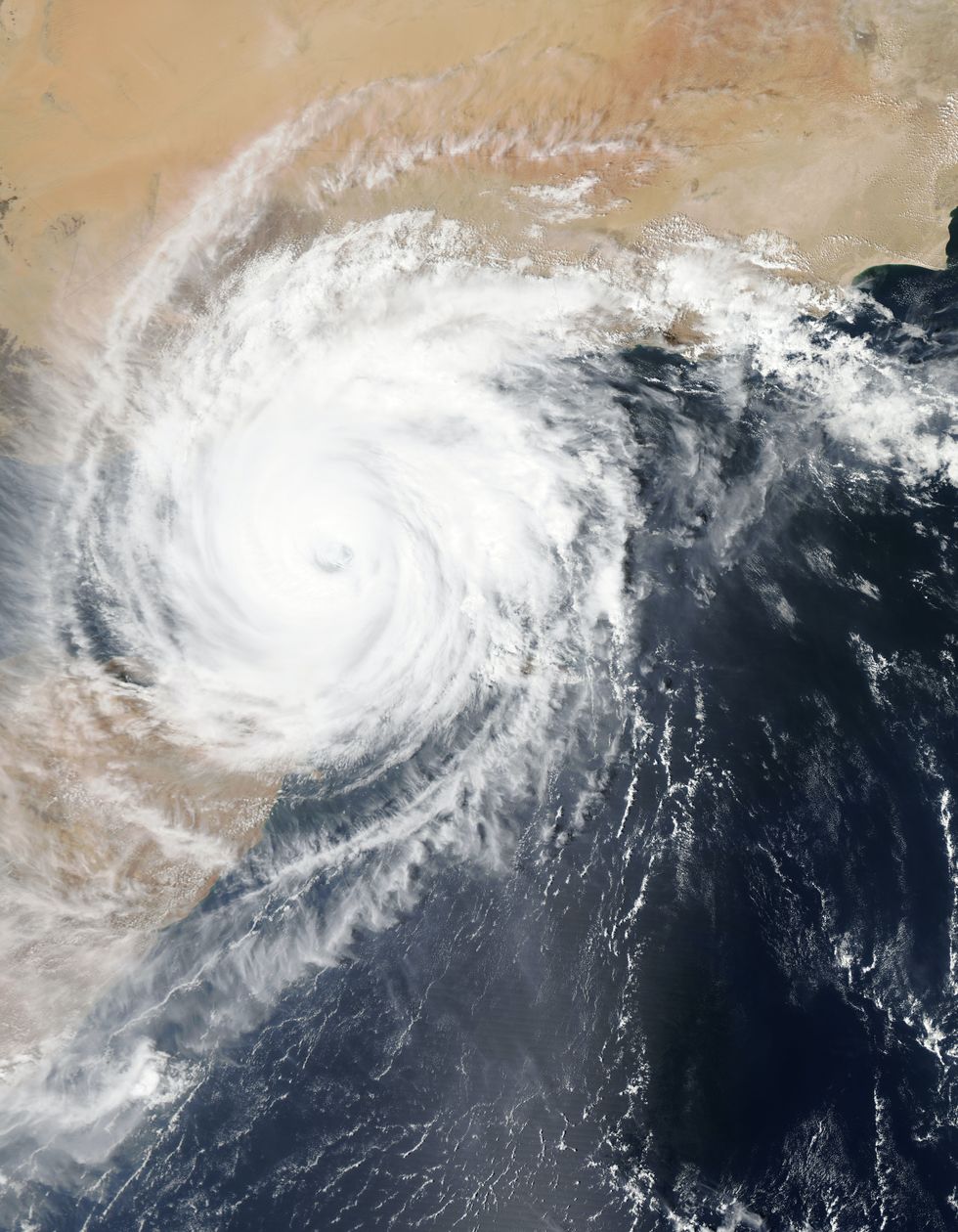 typhoonPhoto by NASA on Unsplash
typhoonPhoto by NASA on UnsplashRecent hurricanes to ravage the Caribbean went by the names Harvey, Irma, and Martha. But until 1947, hurricanes and tropical storms did not have official names. That year, the U.S. Air Force started naming them after the phonetic alphabet the military uses to spell out words over the radio. They weren’t consistently given people’s names until the 1950s.
4. No Hurricane Juniors
In the case of a particularly damaging storm, a hurricane’s name is retired indefinitely.
5. Trouble at Sea
The sinking of the USS Indianapolis in 1945 resulted in the largest loss of life at sea from a single ship in the history of the US Navy. The ship was torpedoed by a Japanese submarine during World War II and sank in twelve minutes. Only 317 of the 1,196 crewmen aboard survived.
6. Sugar Rush
 beige concrete building under blue sky during daytimePhoto by chris robert on Unsplash
beige concrete building under blue sky during daytimePhoto by chris robert on UnsplashThe “panic bar” is the device that allows you to open a door by pushing on a bar. It was invented after an incident at Victoria Hall concert venue in England in 1883. 183 children were lost in a stampede caused by boys and girls who rushed to get the gifts and treats being handed out by performers onstage.
The children who rushed to the door were unable to open the bolt, and many were crushed.
7. A Rough Night at the Theater
The worst incident in a theater, though, was the Iroquois Theatre fire in Chicago in 1903. More than 600 people lost their lives, in part because there were no exit signs and no emergency lighting. Other tragic factors that increased the casualties were ornamental doors that looked like exits (but weren’t), and stairways that were blocked with iron gates during performances to keep people with cheap tickets from taking more expensive seats.
8. Illegal in Ireland
Irish folk singer Christy Moore was found in contempt of court in 1985 for his song “They Never Came Home,” about the victims of a fire at the Stardust nightclub in Dublin. Because the song implied that the nightclub owners and the government were responsible, the song was banned and removed from Moore’s album. The song’s lyrics are still banned in Ireland as libelous.
9. (Un)Happy Land
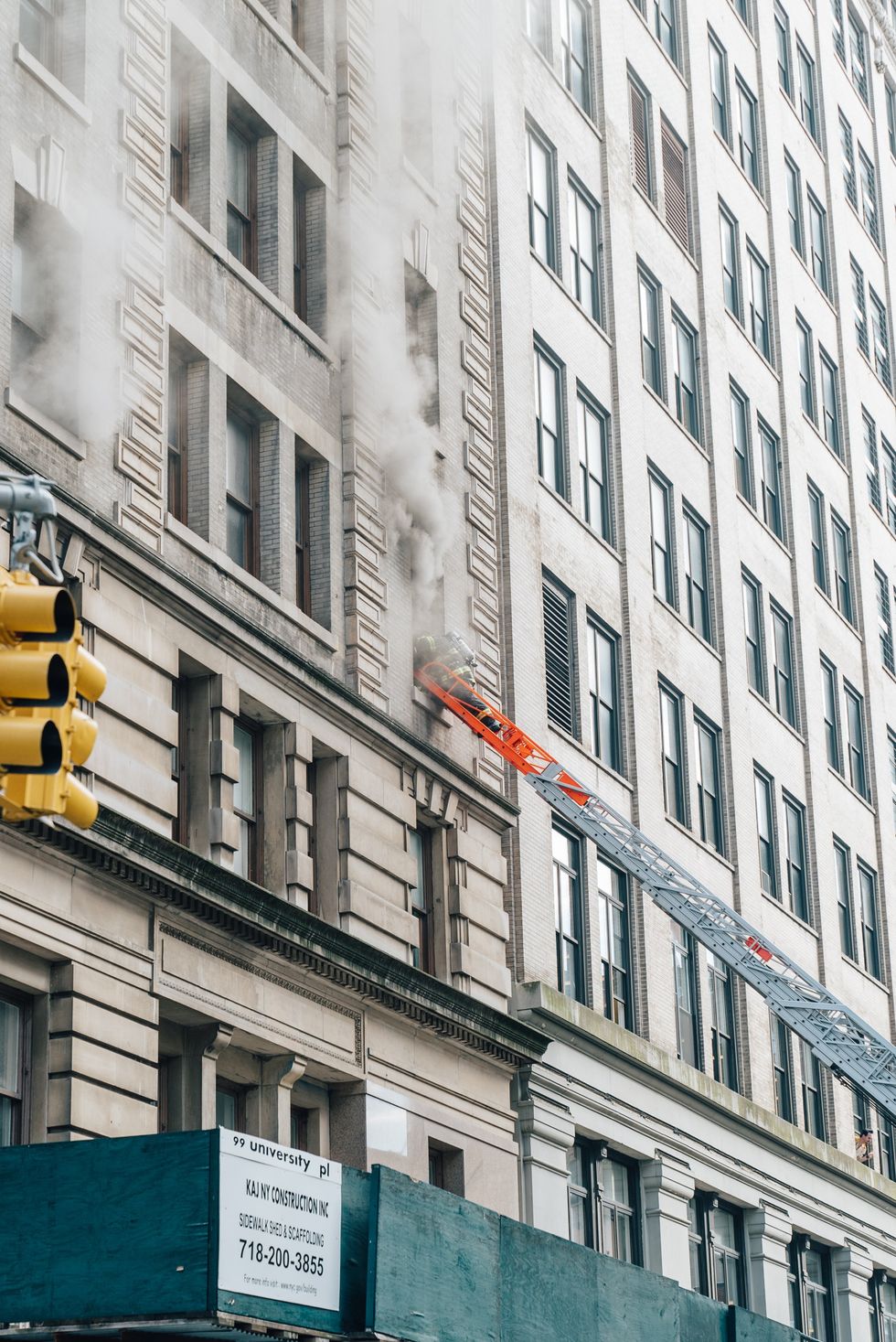 white buildingPhoto by Matthew LeJune on Unsplash
white buildingPhoto by Matthew LeJune on UnsplashThe Happy Land fire might have the most ironic name in the history of mass casualties. This fire claimed 87 people at the unlicensed Bronx nightclub in 1990 when Julio González set the building on fire after a fight with his ex-girlfriend, who worked coat-check at the club.
10. It Went Over Like a Lead Balloon
The most people ever lost in a balloon accident was 19, when a hot air balloon caught fire over Luxor, Egypt in 2013. The passengers were all tourists on a sight-seeing trip. Along with the pilot, a single passenger survived the incident.
11. A Rough Couple of Years
The period between 1850 and 1873 in modern-day China saw some of the highest mortality ever recorded. Between imperialist expansion, the Opium Wars, and the Taiping Rebellion, the population dropped by more than 60 million.
12. You Thought the Snowpocalyspe Was Bad
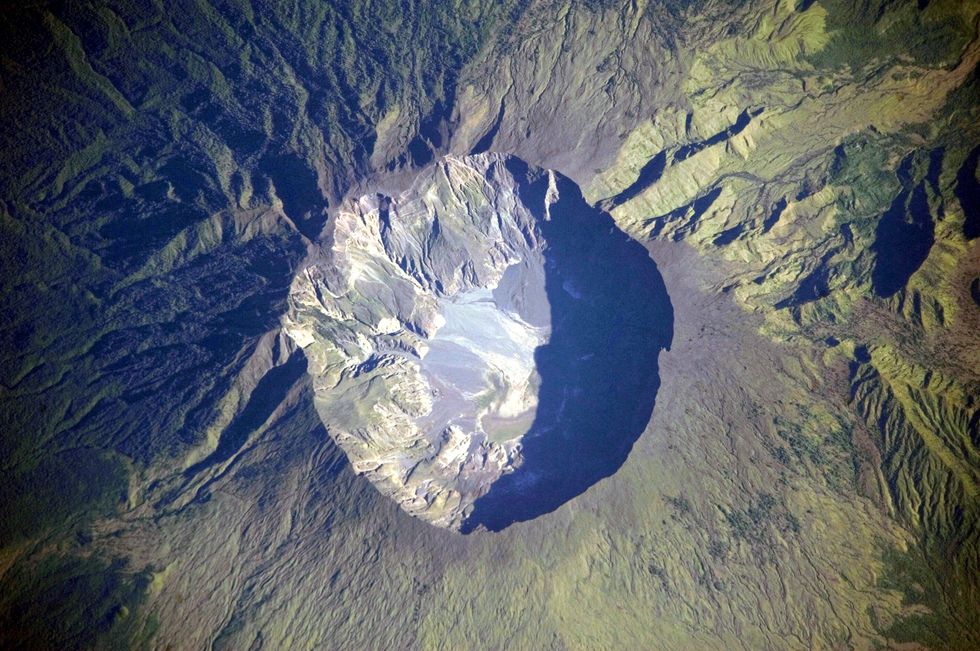 File:Mount Tambora Volcano, Sumbawa Island, Indonesia.jpg ...commons.wikimedia.org
File:Mount Tambora Volcano, Sumbawa Island, Indonesia.jpg ...commons.wikimedia.org1816 was known as the Year Without a Summer. The eruption of a volcano at Mount Tambora caused a volcanic winter, and snow fell in June. Severe weather across North America, Europe, and Asia caused famine and flooding, which resulted in food riots and disease outbreaks. Fatality rates were twice as high as in other years.
13. Bad Weather Makes Good Monsters
The Year Without a Summer, however, helped to invent some of our most significant modern monsters. A group of writers including Percy Shelley, Mary Wollstonecraft (later Shelley), and Lord Byron had to stay inside during their trip to Lake Geneva because of the bad weather, and they passed the time with a story-telling contest. This was where Mary Shelley started her novel Frankenstein. Another staycationer, John Polidori, began work on The Vampyre, which eventually inspired Bram Stoker to write Dracula.
14. Armed Forces
White Arkansas men hanged up to 237 black sharecroppers in the 1919 Elaine massacre, the worst racial conflict in US history. U.S. troops claimed the lives anywhere from 60 to 200 Pomo men, women, and children at Bloody Island in 1850; and up to 300 Lakota at the Battle of Wounded Knee in 1890.
15. A Streetcar Named Disaster
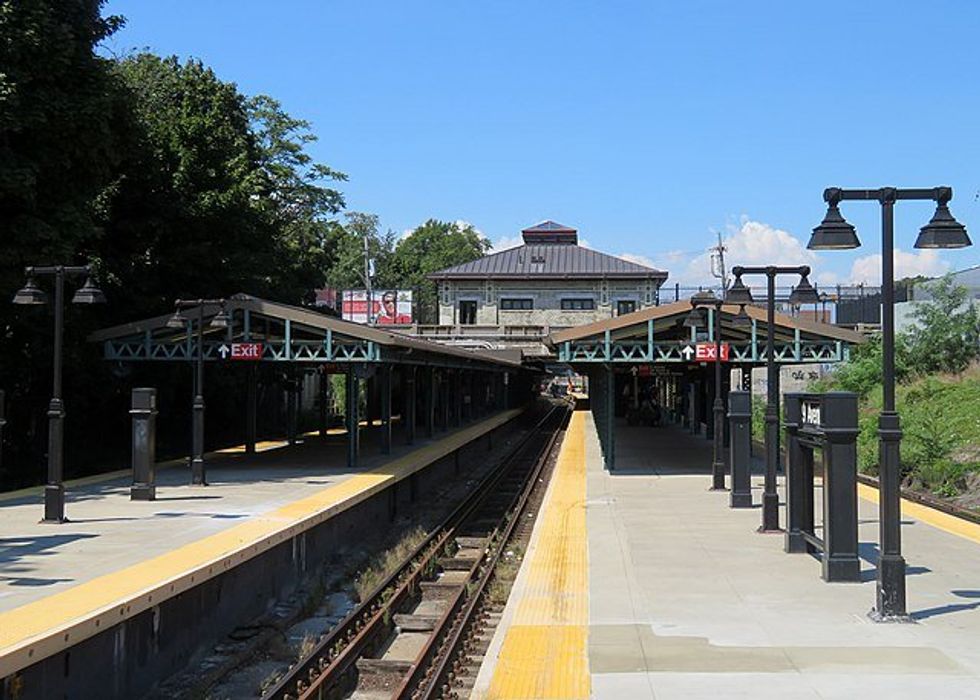 File:Ninth Avenue station from Manhattan-bound platform, September ...commons.wikimedia.org
File:Ninth Avenue station from Manhattan-bound platform, September ...commons.wikimedia.orgThe worst subway accident in New York City history happened in 1905, when an aboveground train turned too quickly, jumped the track, and fell onto Ninth Avenue. 13 people lost their lives. The accident happened, eerily, on September 11th.
16. Mother Nature’s Worst Day
The most lives ever lost in a natural disaster may be the Shaanxi earthquake in 1556, in modern-day China, which claimed approximately 830,000 people.
17. Can You Say La Grippe
The “Spanish Flu” was the name given to an 1918 influenza pandemic that cost 500 million people their lives around the world. The name comes from the fact that, while wartime censors suppressed news of the pandemic in the US, the UK, France, and Germany, the press in Spain was free to report on the tragedy. This gave the world a false impression that Spain was hardest hit by the flu—and the name stuck.
18. Smoke Gets in Your Eyes
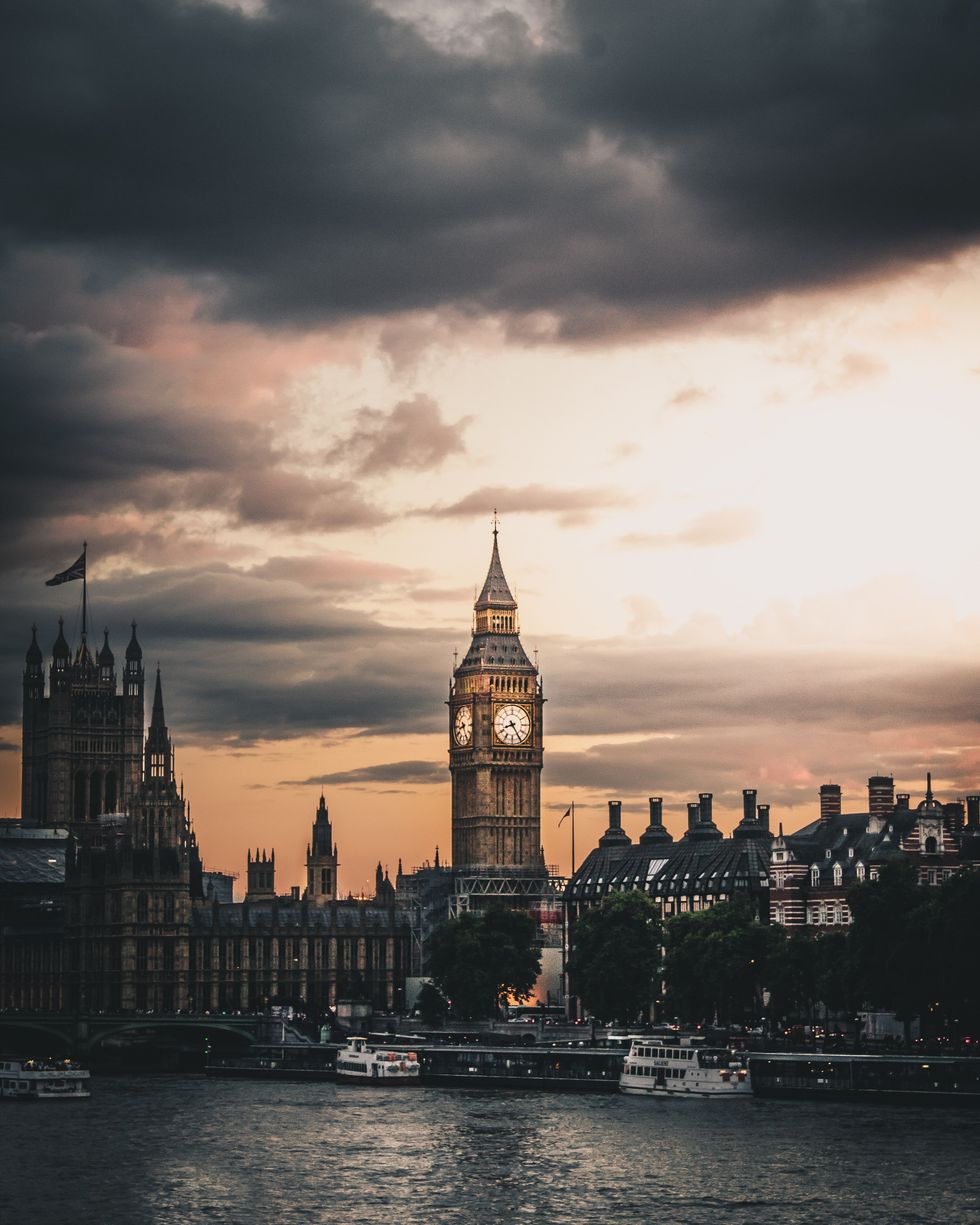 Big Ben towerPhoto by Luke Stackpoole on Unsplash
Big Ben towerPhoto by Luke Stackpoole on UnsplashSince the 1200s, London has had problems with air quality, but in 1952, a severe air-pollution event called the Great Smog of London blanketed the city with yellow-black smoke for four days, making it hard to see more than a few feet. The city nearly shut down, and the smog resulted in up to 12,000 lost lives from lung and respiratory tract infections.
19. Not Just a Cherry Poppin’ Daddies Song
While the 1997 neo-swing single is a fun dance tune, the original Zoot Suit Riots were less light-hearted. The series of attacks on Mexican-American teenagers by white servicemen stationed in Los Angeles in 1943 was ostensibly sparked by the fact that the young men’s flashy suits flaunted wartime fabric rationing, but there were also racial motivations.
20. Just the Hali-Facts
The Halifax Explosion of 1917 occurred when a cargo ship carrying explosives collided with another ship in Halifax Harbour, killing 2,000 people and injuring 9,000. It was the largest man-made explosion prior to the development of nuclear weapons, and the standard by which large blasts were measured for many years.
21. Lucky Number Seven
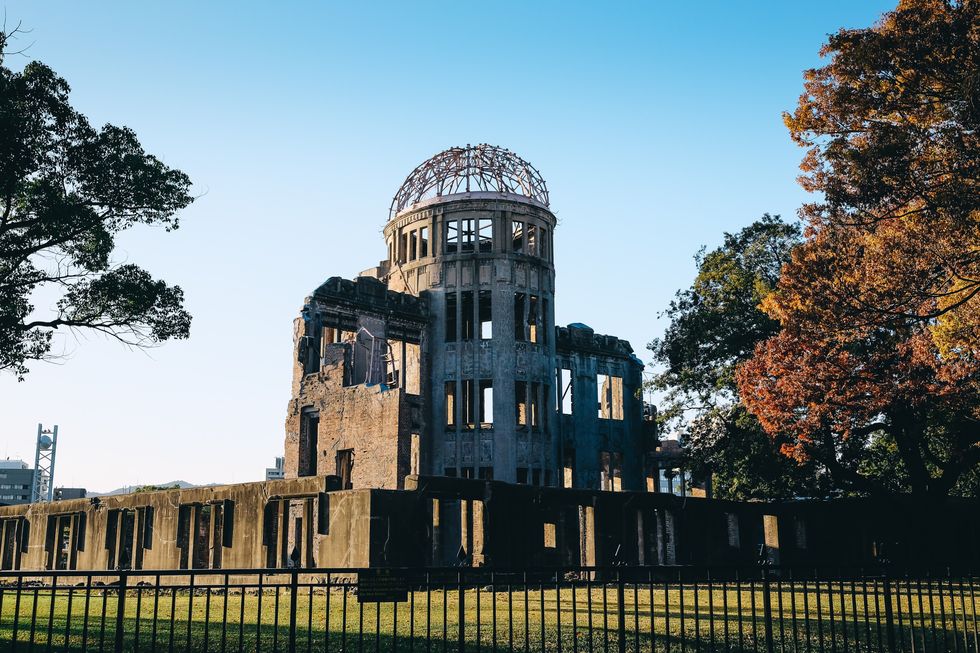 trees beside brown concrete buildingPhoto by Rap Dela Rea on Unsplash
trees beside brown concrete buildingPhoto by Rap Dela Rea on UnsplashTime magazine reported on the atomic bombing of Hiroshima in 1945 by saying that the bomb’s power was equivalent to seven times the Halifax Explosion.
22. Our Daily Bread
A famine in Malta in 1823 became even more tragic when 110 hungry boys who went to the Convent of the Minori Osservanti to get free bread on the last day of Carnival celebrations fell down a flight of stairs and were crushed.
23. The Luckiest Unlucky Man
Clifford Johnson was injured at the worst nightclub fire in history, at the famous Cocoanut Grove in 1942. He suffered third-degree burns over more than half his body but survived, and was seen as a medical marvel. After hundreds of operations and nearly two years in the hospital, he married his nurse. In an ironic twist of fate, he lost his life in a fiery car crash in 1958.
24. Flamin’ Hot Sportsball
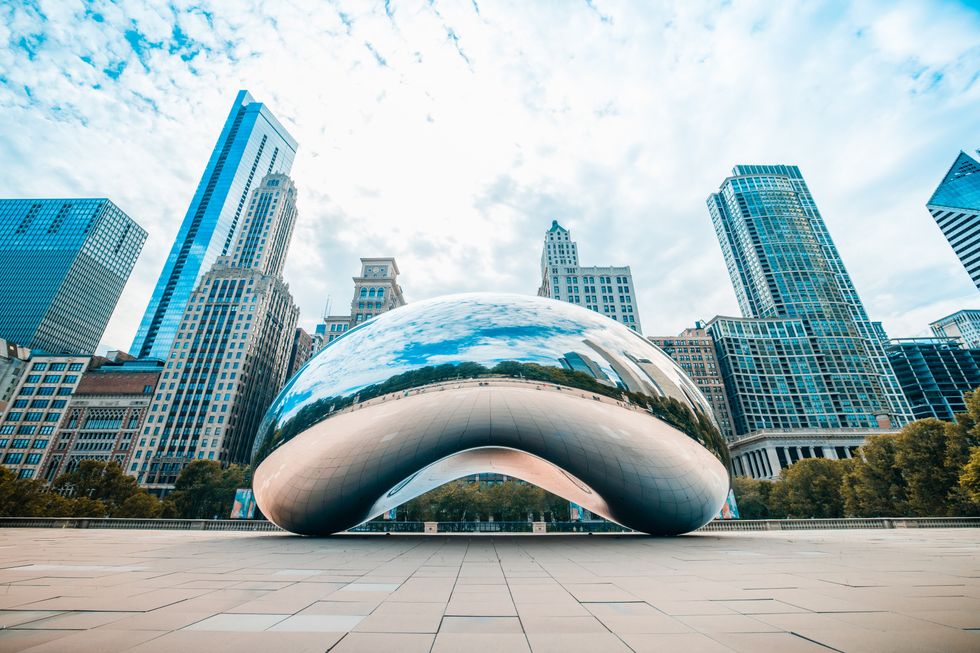 cloud gate in city during daytimePhoto by Christopher Alvarenga on Unsplash
cloud gate in city during daytimePhoto by Christopher Alvarenga on UnsplashSports teams at the University of Illinois at Chicago are nicknamed the Flames, to commemorate the infamous Great Chicago Fire.
25. Dam Unfortunate
The failure of the Banqiao and Shimantan Dams in China in 1975 caused 171,000 casualties—the largest dam-related disaster in history.
26. Whoops
In 1871, a lawyer named Clement Vallandigham accidentally shot himself while defending a murder suspect. He was trying to demonstrate that the murder victim could have accidentally shot himself. The client was acquitted, but the lawyer didn't survive.
27. The Beheaded Man’s Revenge
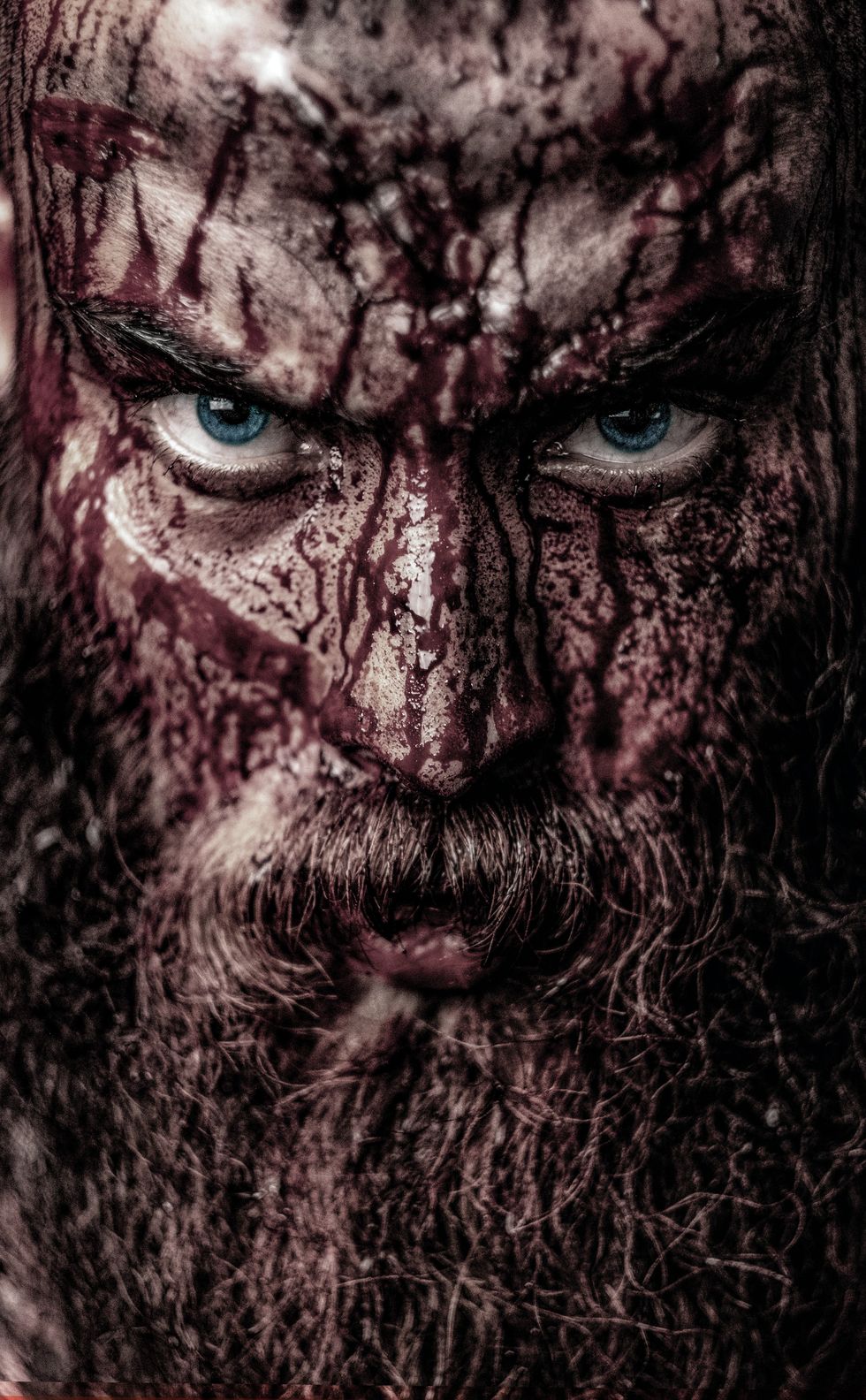 a close up of a man with a beard and blue eyesPhoto by shahin khalaji on Unsplash
a close up of a man with a beard and blue eyesPhoto by shahin khalaji on UnsplashA ninth-century Norse earl named Sigurd the Mighty was slain by an enemy he had beheaded hours earlier. He tied the severed head to his horse’s saddle, but on the ride home the man’s tooth scratched his leg, and the succumbed to the resulting infection.
28. But Not the Last
The robot fatality was Robert Williams, in 1979. The Ford assembly-line worker was hit in the head by a robot’s arm.
29. Dancing in the Dark
400 people in Strasbourg, France were struck by dance madness in the summer of 1518. They were compelled to dance for about a month for no clear reason. Several danced themselves until their hearts stopped.
30. Hands Off
Queen Sunanda Kumariratana of Siam (now Thailand) drowned when her boat capsized in 1880. Many witnesses stood by, unable to help, because it was a capital offense to touch the queen. Some boatmen did eventually jump in to try and save her, but it was too late.
31. Lager Than Life
Eight people drowned in the London Beer Flood of 1814 when a massive vat of fermenting beer burst, filling the streets with over 1,000,000 imperial pints’ worth of beer.
32. High Expectations
An Austrian named Franz Reichelt invented a parachute in 1912 and tested it himself by jumping off the Eiffel Tower. The invention didn’t work. He didn't get the chance to go back to the drawing board.
33. White Light White Heat
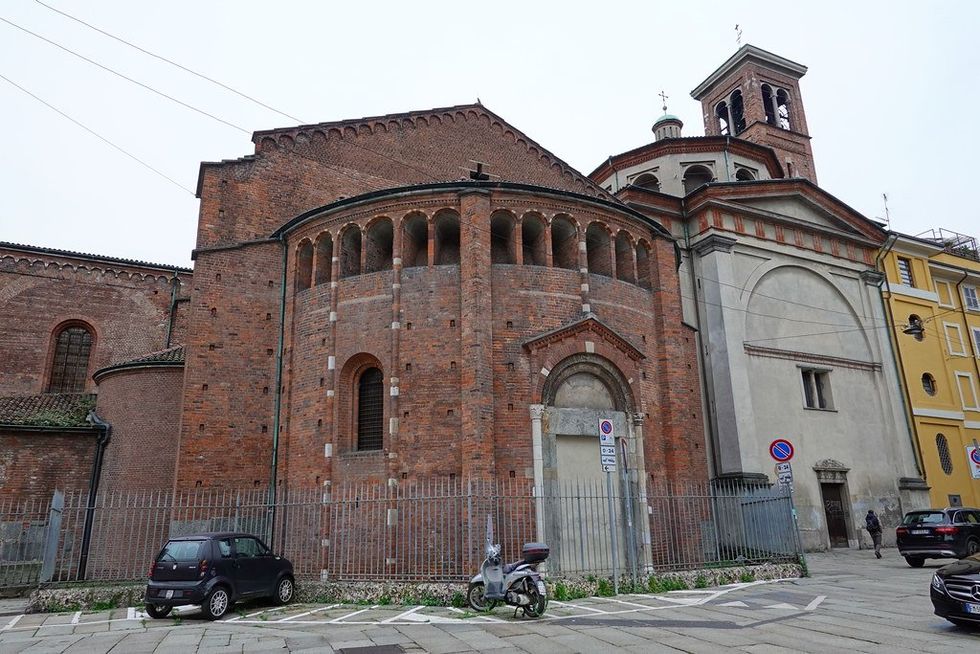 Basilica San Nazaro in Brolo @ Milan | Guilhem Vellut | Flickrwww.flickr.com
Basilica San Nazaro in Brolo @ Milan | Guilhem Vellut | Flickrwww.flickr.comIn 1769, lighting struck the tower of the Church of the San Nazaro in Italy, where 207,000 pounds of gunpowder had been stored. The resulting fire claimed 3,000 people and destroyed one-sixth of the city.
34. The Fall of the King
King Albert of Belgium disappeared while rock climbing in 1934. His body was found, but it wasn’t until 2016 that DNA evidence proved that his injuries were caused by a fall, putting to bed the conspiracy theories that had existed for decades.
35. A Disarming Crew
Among the people who wrestled the gun away from presidential candidate Robert F. Kennedy’s assassin in 1968 were writer George Plimpton, Olympic gold medal decathlete Rafer Johnson, and former New York Giant Rosey Grier.
36. Aftermath in Ohio
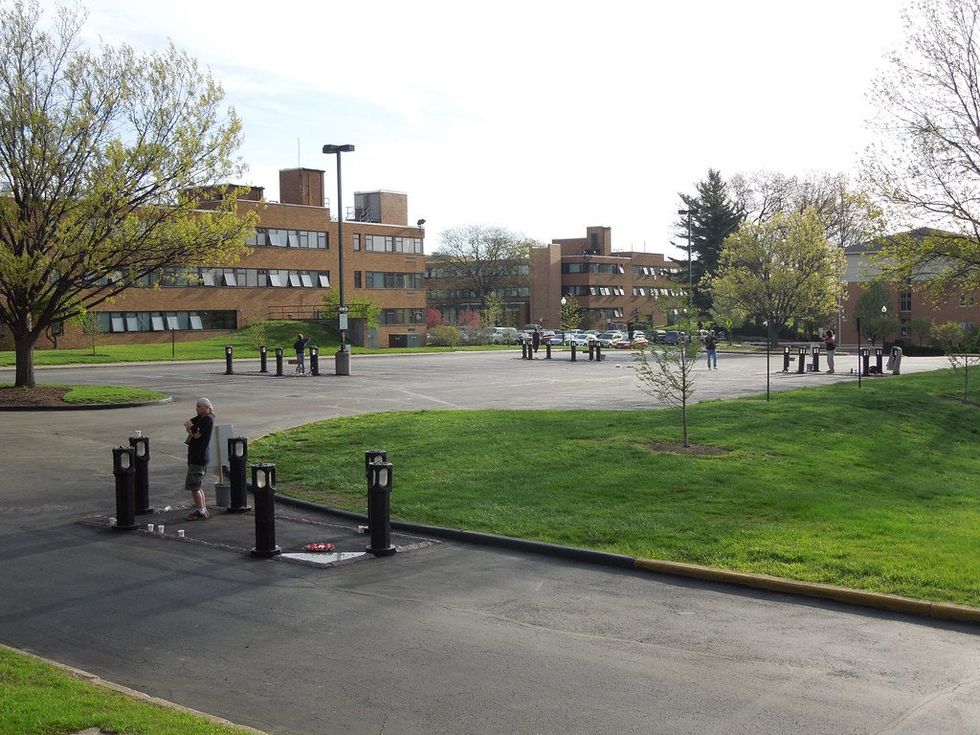 Kent State University - May 4th Memorial: Prentice Parking… | Flickrwww.flickr.com
Kent State University - May 4th Memorial: Prentice Parking… | Flickrwww.flickr.comImmediately following the shootings at Kent State University in 1970, when the National Guard fired and slew four anti-war protestors, 900 university campuses had to be closed due to protests. 100,000 people rioted in Washington, DC, President Nixon was evacuated to Camp David, and the 82nd Airborne was deployed to protect the White House.
37. Unlikely Advocate
When the British soldiers who shot colonists in the Boston Massacre during the American Revolution were tried in court, their lawyer was none other than John Adams, founding father and future president. After being convinced by the court to take the case, Adams persuaded the jury that the soldiers had feared for their lives, reducing the charge to manslaughter.
38. In Your Heeeeeead
The Cranberries song “Zombie” was written in memoriam for two young boys who lost their lives in a 1993 bombing by the Irish Republican Army in Warrington, England.
39. It Actually Is Rocket Science
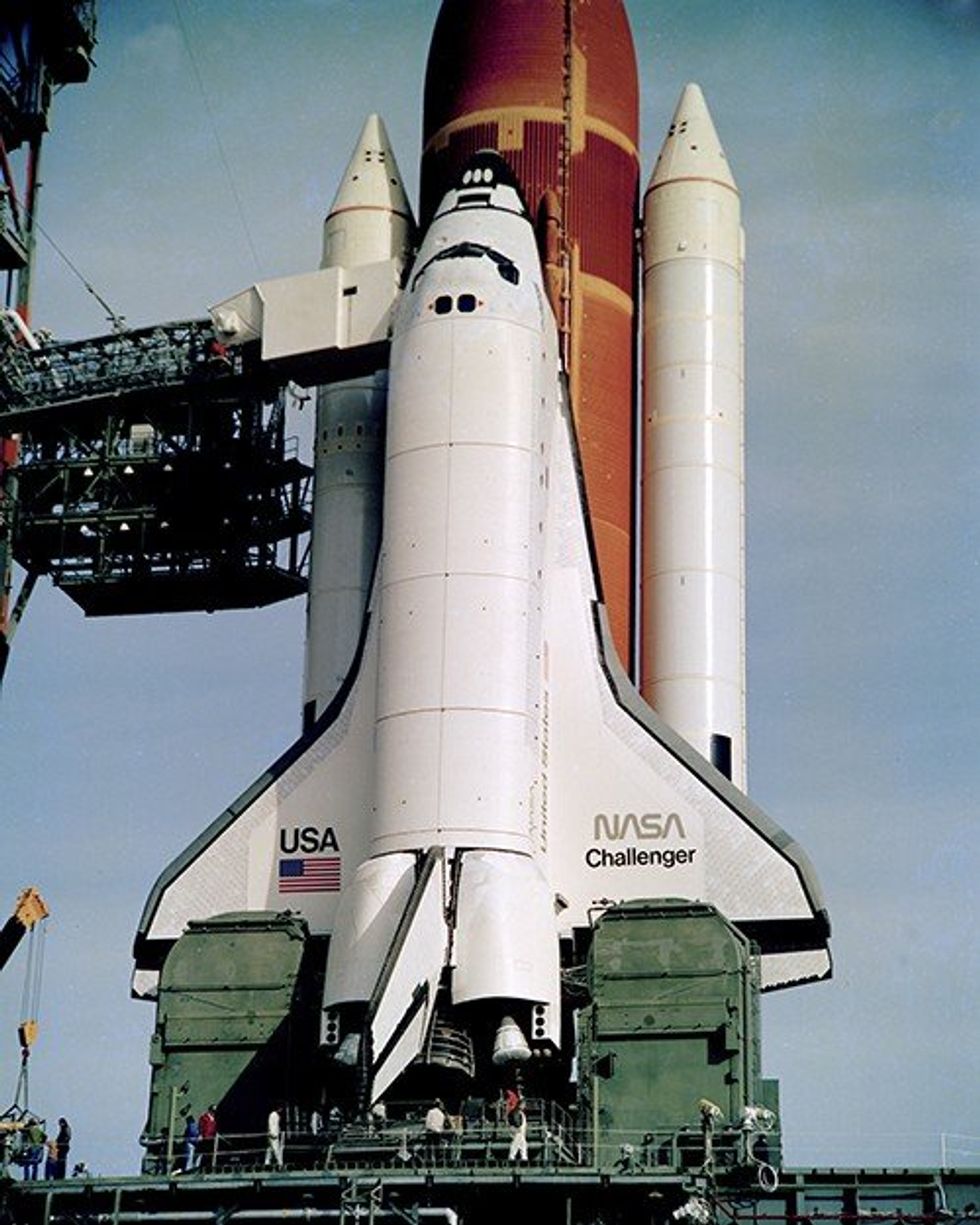 January 28, 1986 – Space Shuttle Challengerwww.history.navy.mil
January 28, 1986 – Space Shuttle Challengerwww.history.navy.milDesigners of the parts for the Challenger space shuttle, which exploded in 1986, warned that the shuttle shouldn’t have been launched because a seal could come loose in cold weather. NASA officials disregarded the warning, with one asking, "When do you want me to launch—next April?"
40. Survivor
Imagine the odds of being struck by lightning twice. Pretty rare. I'm sure if that happened to you, you'd think you must have been cursed by some sort of vindictive witch.
So imagine the confusion and suffering of Tsutomu Yamaguchi, a Japanese man who survived the bombing of Hiroshima...only to move to Nagasaki immediately after.
The torment he must have experienced is beyond belief.
41. Situation Twenty-One
At the Munich Olympic Games in 1972, a group of armed Palestinians broke into the apartment of Israeli athletes, killing two and taking the rest hostage. The Palestinians then demanded the release of 236 prisoners and a plane to fly them to Cairo.
Nearly every detail of this scenario had been foreseen by police psychologist Georg Sieber, who the German government had tasked with coming up with possible Olympic disaster scenarios. Sieber had 26 scenarios; the 1972 events were Situation Twenty-One.
42. He Should Have Accepted the Offer
 Google signPhoto by Pawel Czerwinski on Unsplash
Google signPhoto by Pawel Czerwinski on UnsplashIn 1999, the founders of Google approached Excite CEO George Bell, offering to sell him the search engine for $1 million. When Bell refused, they lowered the price to $750,000, which he also rejected. Today, Google is valued at $365 billion.
43. We’ll Pass
In 2009, Facebook turned down a pair of programmers for jobs. No big deal, right? Must happen all the time at FB HQ....
A few years later, though, the pair developed WhatsApp. Facebook subsequently purchased that venture for a cool $19 billion.
44. Trains Were Too Wide
The French state railway SNCF spent $15 billion on a new fleet of trains, but unfortunately, they were the wrong size, and were too wide for their 1300 platforms. The mistake cost them an estimated $50 million to correct.
45. A Case of Bad Timing
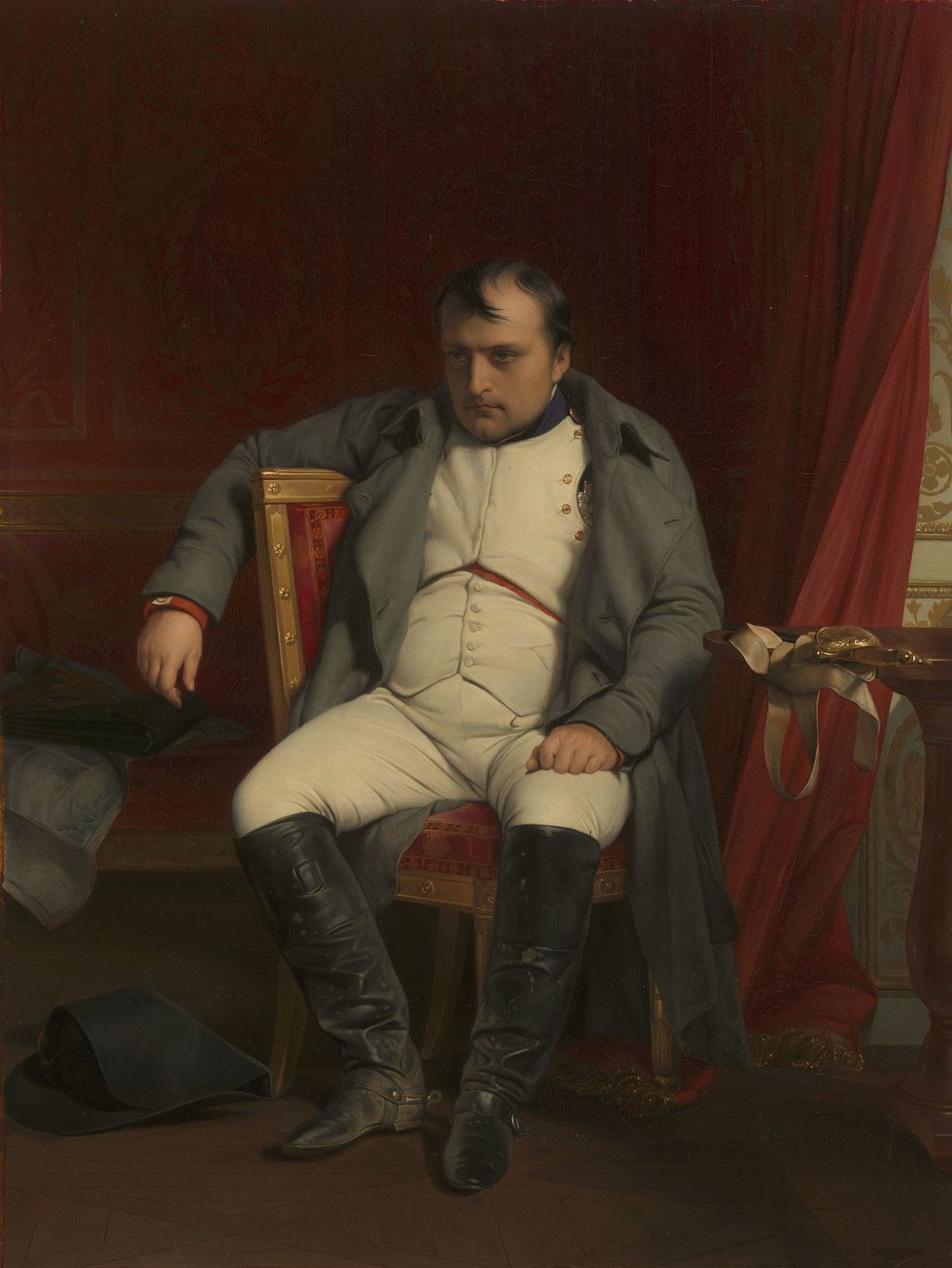 File:Napoleon at Fontainebleau, 31 March 1814 (by Hippolyte Paul ...commons.wikimedia.org
File:Napoleon at Fontainebleau, 31 March 1814 (by Hippolyte Paul ...commons.wikimedia.orgJust over 200 years ago, Napoleon’s army attempted to invade Russia.
Whoops.
A combination of factors spelled doom for the invasion. There wasn't nearly enough food for the soldiers and horses. Poor discipline was rampant in the ranks. And, of course, none of the men were prepared for the unimaginable brutality of a full Russian winter.
It was a devastating failure. Napoleon lost 500,000 troops.
46. A Flaw in the Design
On 26th April 1986, engineers at the V.I. Lenin Nuclear Power Station, a Soviet facility, were testing a new cooling system designed to reduce the risk of a meltdown. Their test caused a meltdown, and the resulting explosion destroyed Chernobyl’s reactor 4.
The Chernobyl Forum predicts that the eventual toll could reach 4,000 among those exposed to the highest levels of radiation. That said, what many people don't know is that the plant actually remained a fully-functioning power plant for years after the disaster.
The disaster destroyed reactor 4, but reactors 1-3 remained open for business. Due to high levels of radiation, plant employees could no longer live beside the facility, but many continued to commute to work to supply power in Europe. The final reactor only ceased operating in 2000.
47. Gambled and Lost
The Spanish telecom company Terra took a gamble when they purchased the search engine Lycos in 2000 for almost $12 billion. At the time, Lycos was the third most visited site in America... but that was before dot.com bubble burst. In just about a year, most internet companies in America lost millions in value. And Lycos was perhaps the biggest loser.
Terra would eventually sell the search engine in 2004 for just $95.4 million. That's an astonishing loss of $11.6 billion dollars on their investment.
48. Don’t Drink and Steer
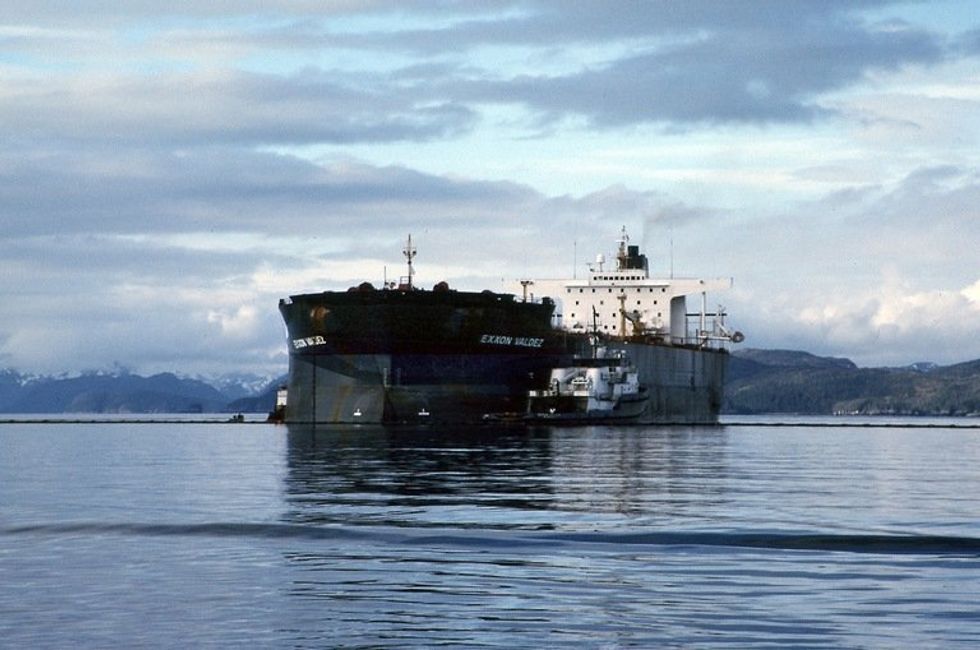 The Exxon Valdez, 25 Years After — FBIwww.fbi.gov
The Exxon Valdez, 25 Years After — FBIwww.fbi.govIn 1989, an Exxon oil tanker was headed to California when it ran aground on the Bligh Reef off the Alaskan coast. The tanker spilled around 760,000 barrels of oil into the water, and the captain was later accused of being drunk at the time of the accident. He was convicted of negligent discharge of oil.
49. The Worst Nuclear Accident in U.S. History
The nuclear meltdown at Three Mile Island in March of 1979 was the result of mechanical failures that were made worse by poor training and oversights in the human-computer interaction design. It was the most significant nuclear disaster in U.S. commercial nuclear power plant history.
There are conflicting reports on the cost of the disaster, with some sources stating that the radiation exposure wasn't significant enough to result in additional cancer fatalities, while others insist that thousands more have been observed.
50. Loss of Cultural Knowledge
The Great Library of Alexandria was one of the largest and most significant libraries of the ancient world, and was dedicated to the Muses—the 9 goddesses of the Arts.
The burning of the library resulted in an irreplaceable loss of knowledge and literature.





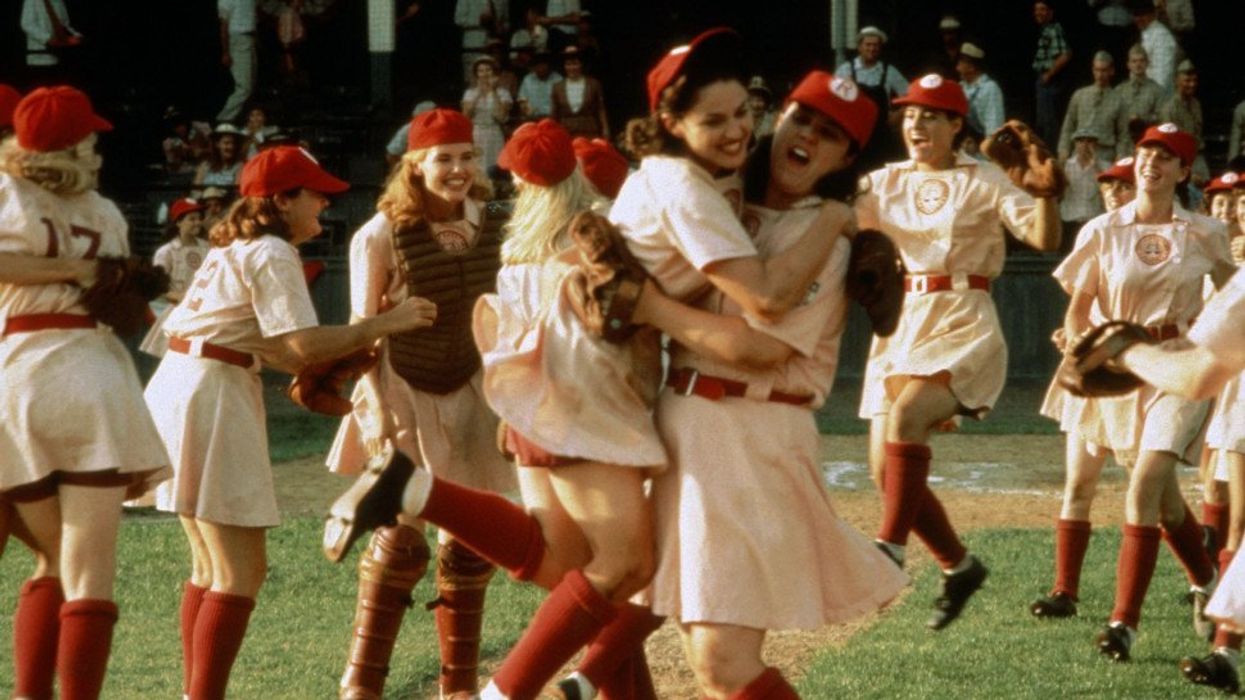





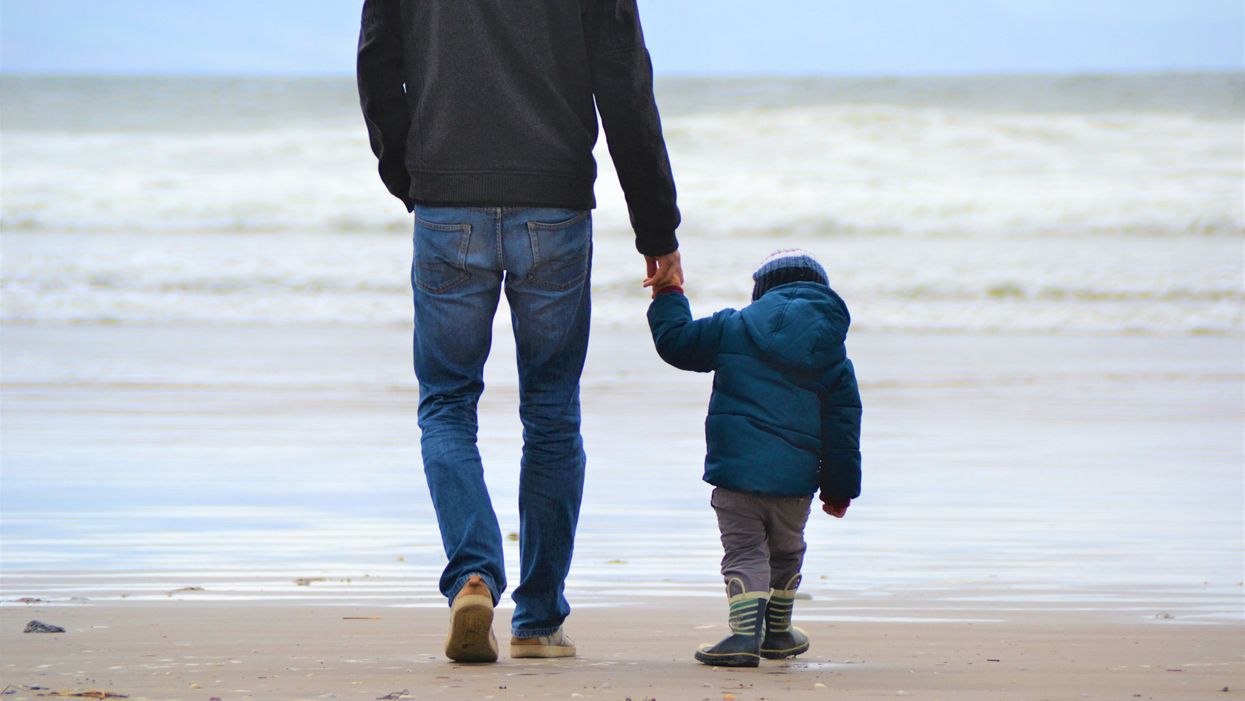

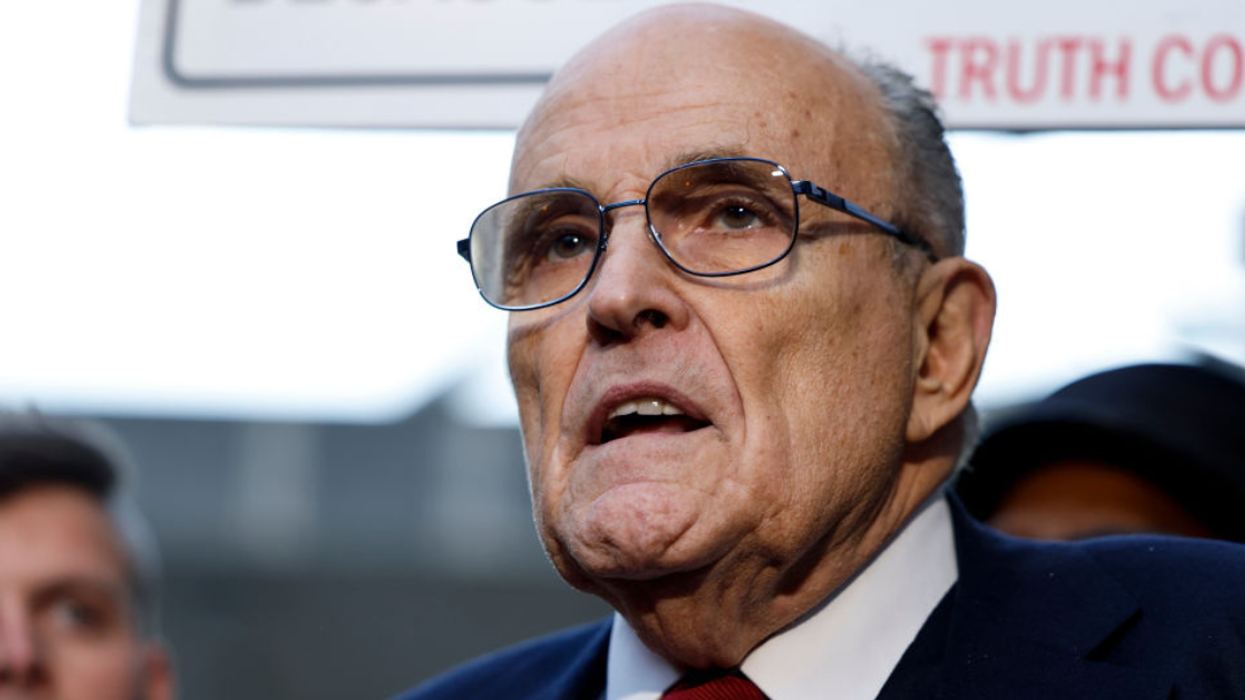
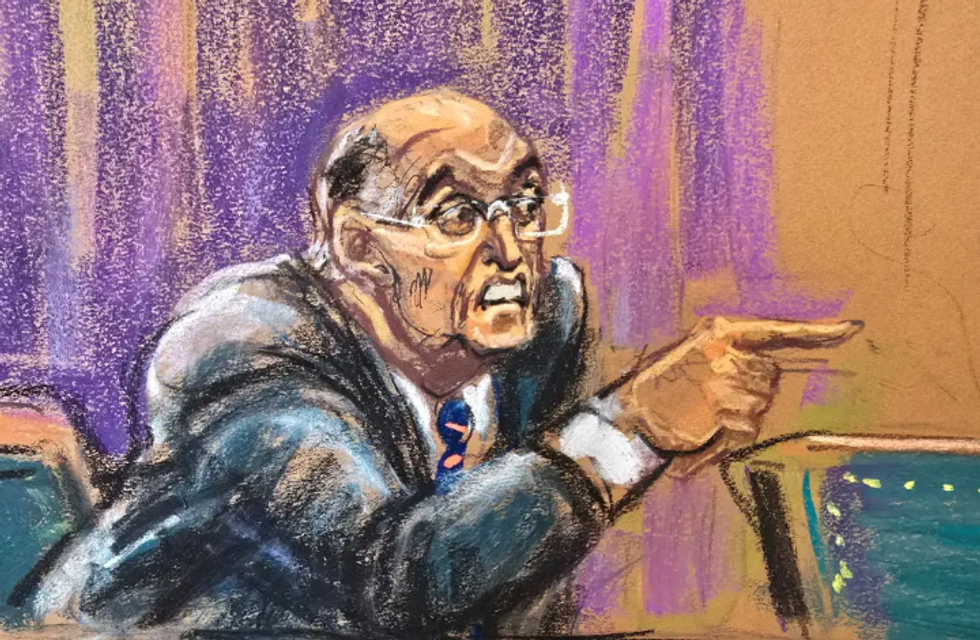 Jane Rosenberg
Jane Rosenberg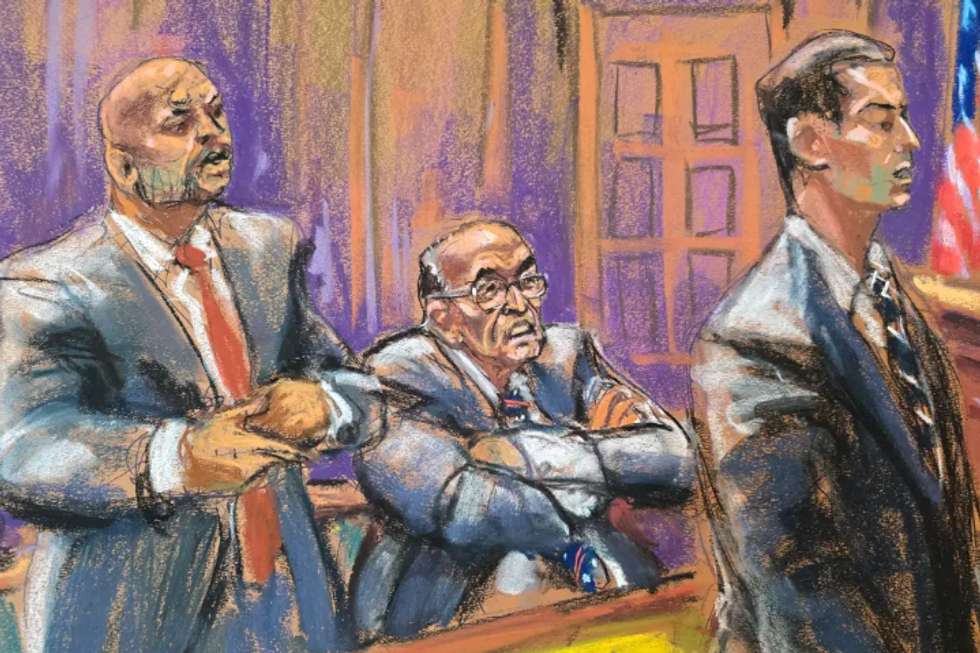 Jane Rosenberg
Jane Rosenberg


 @arianagrande/Instagram
@arianagrande/Instagram @arianagrande/Instagram
@arianagrande/Instagram